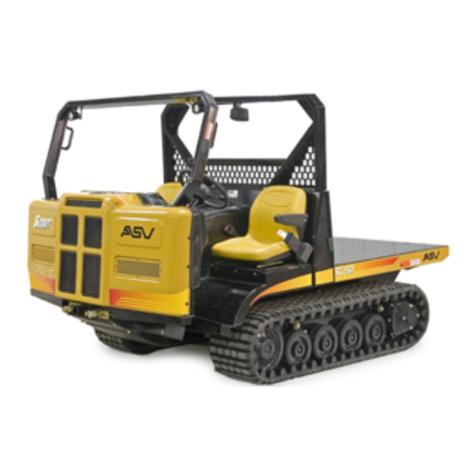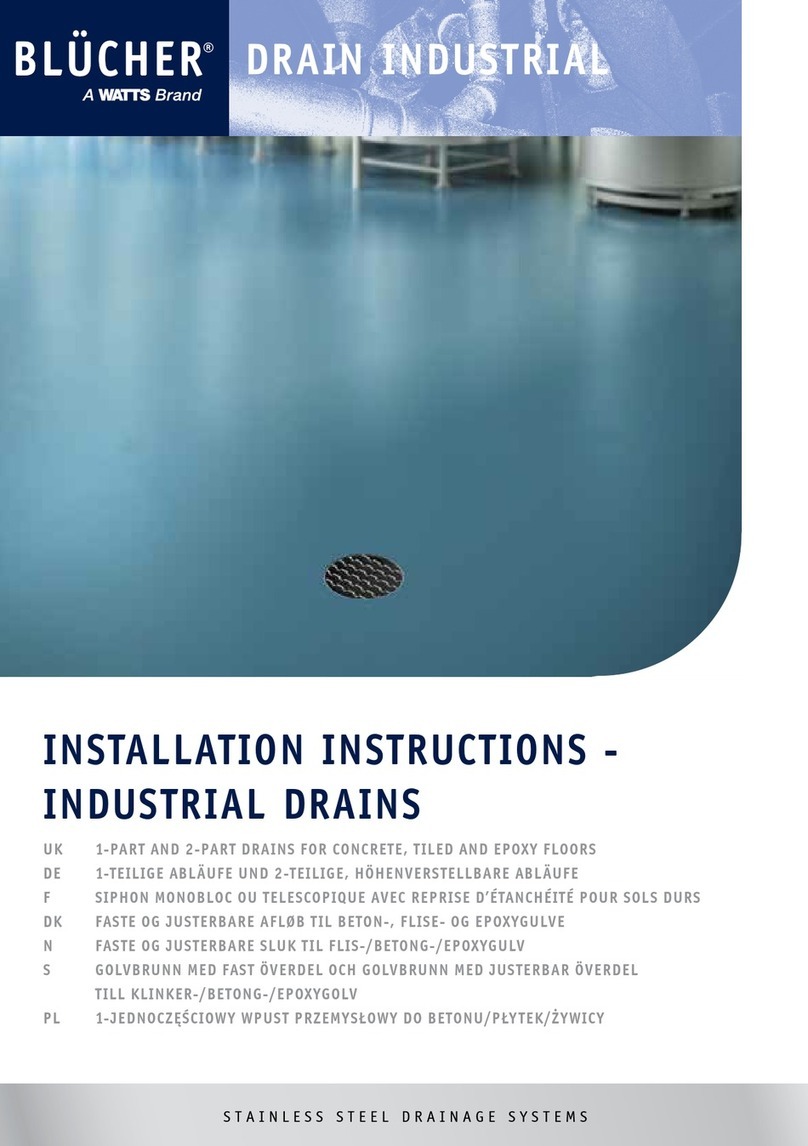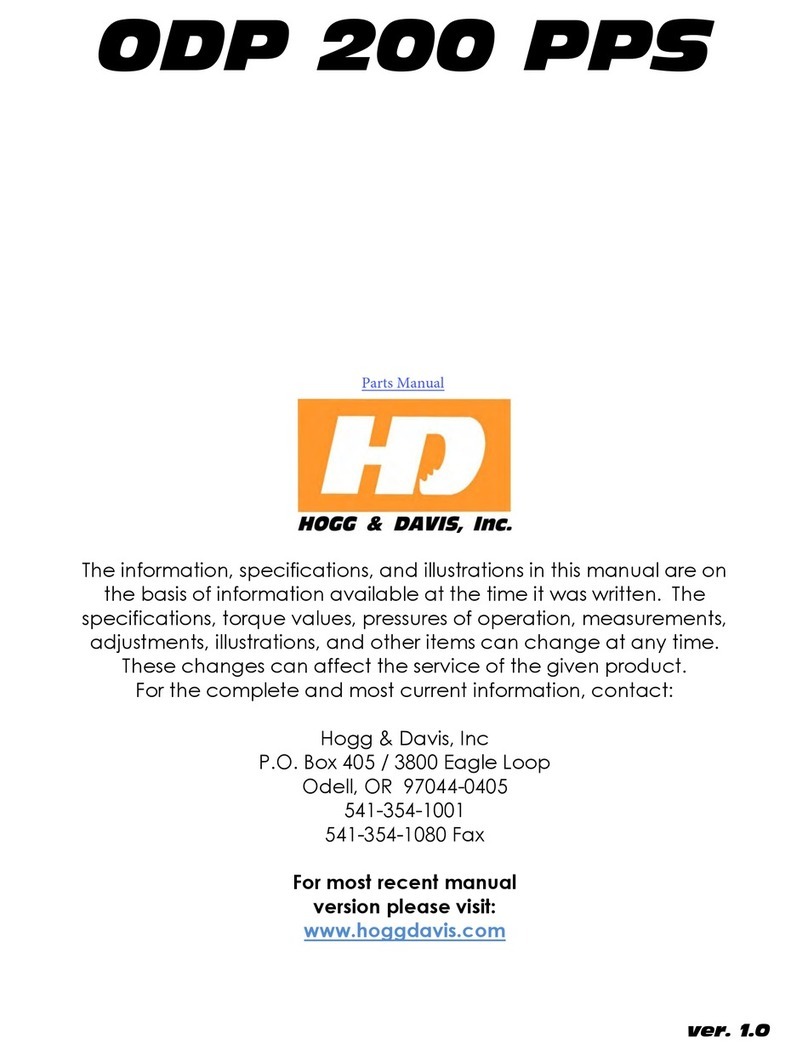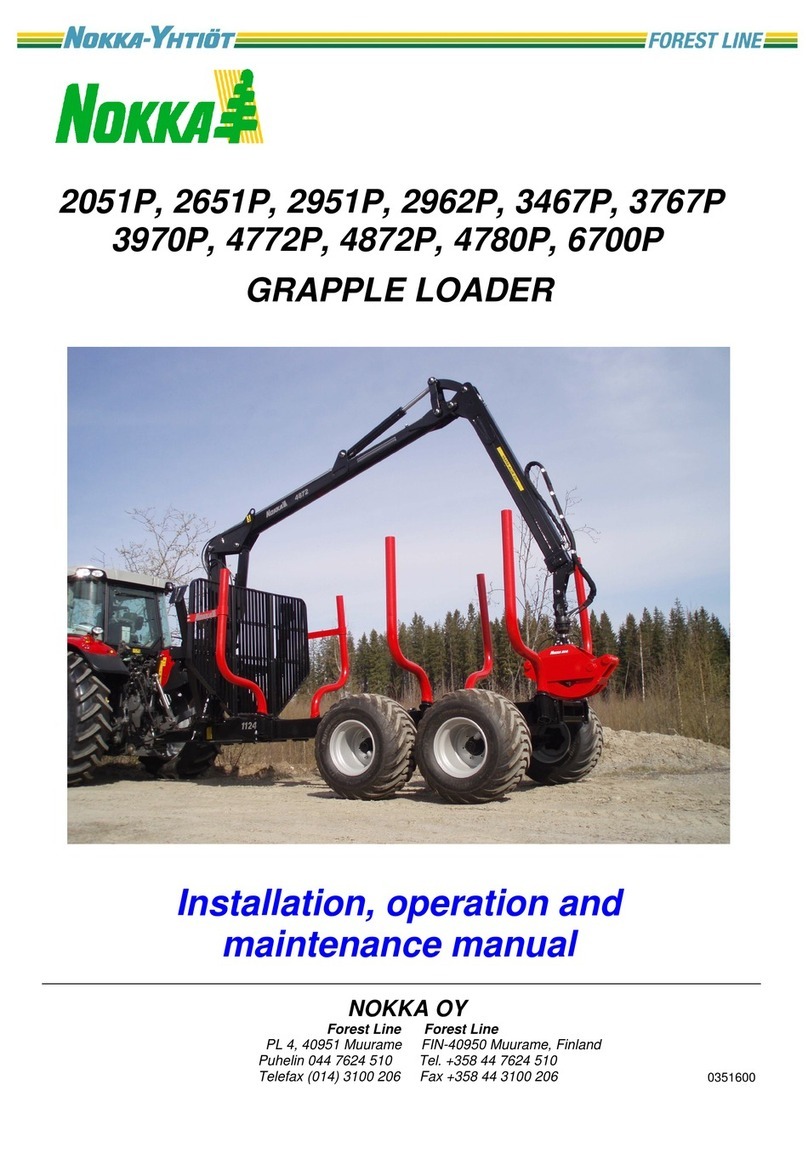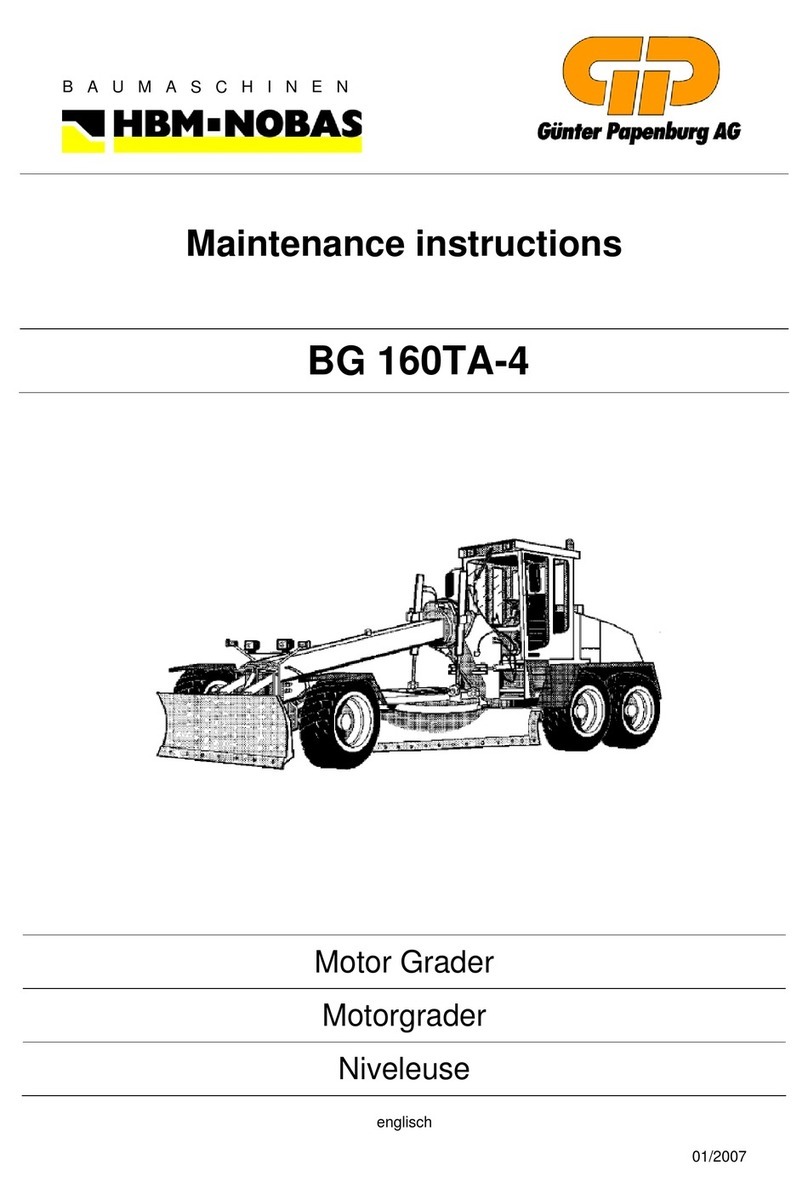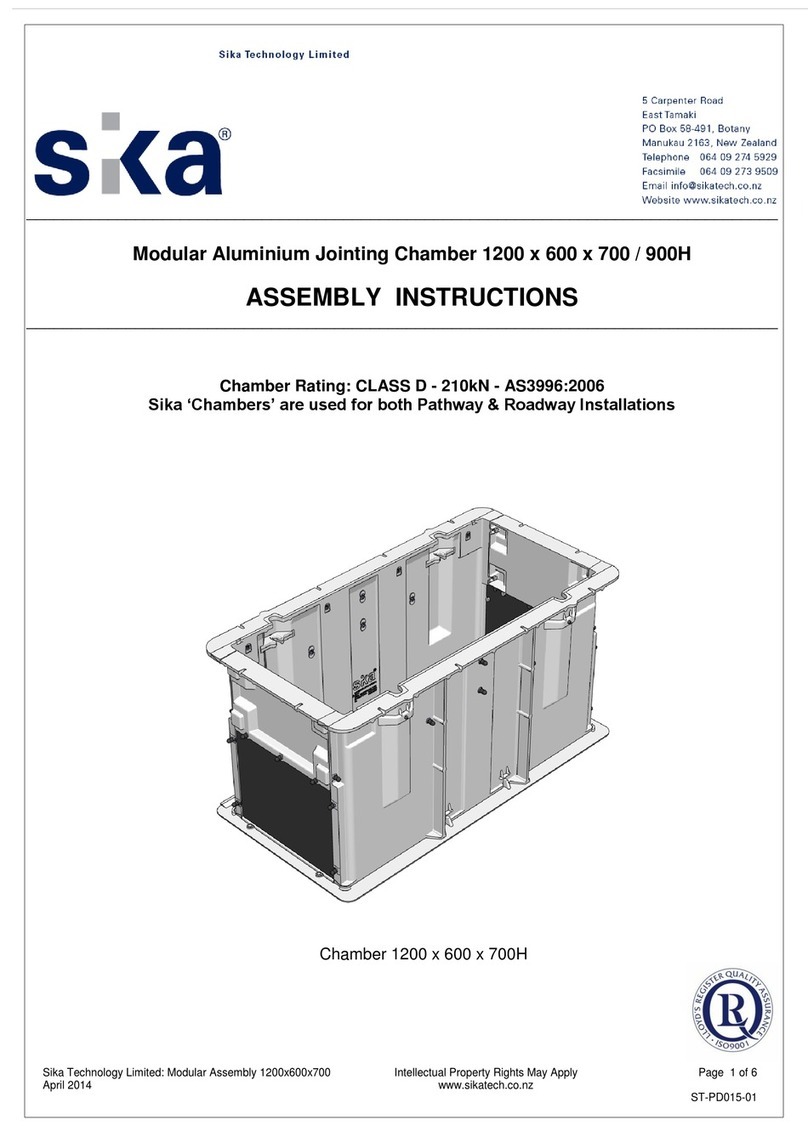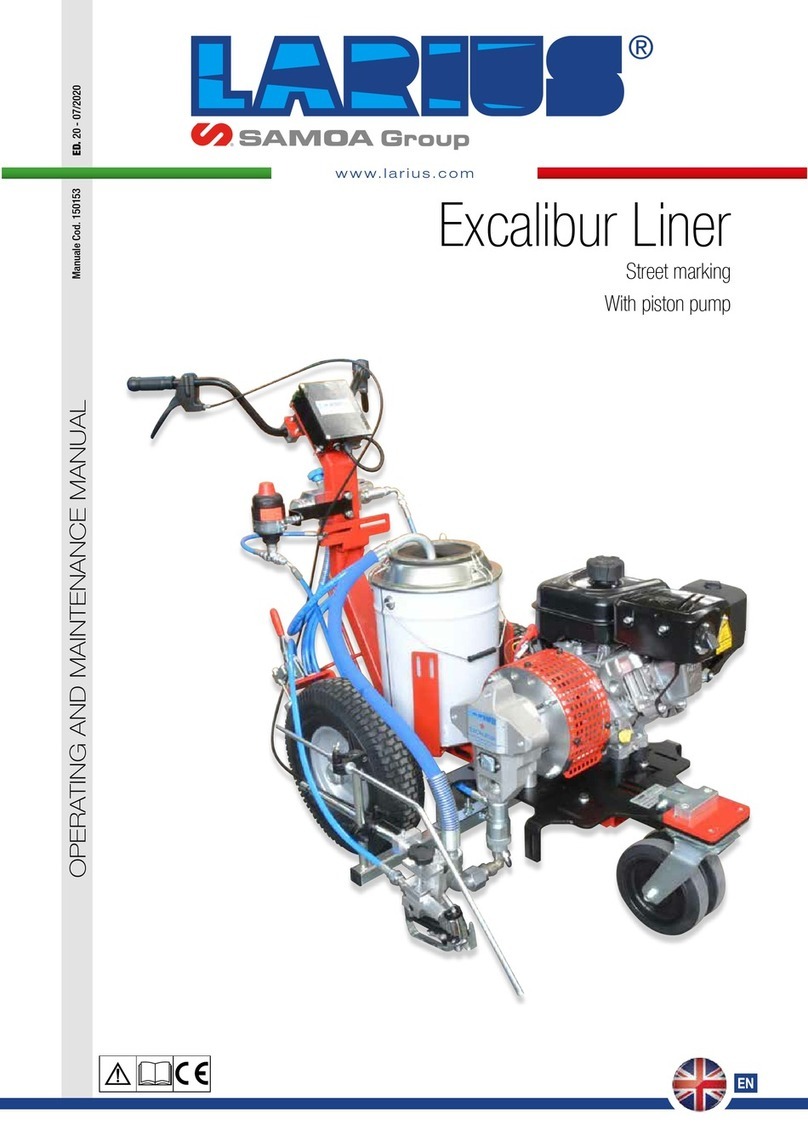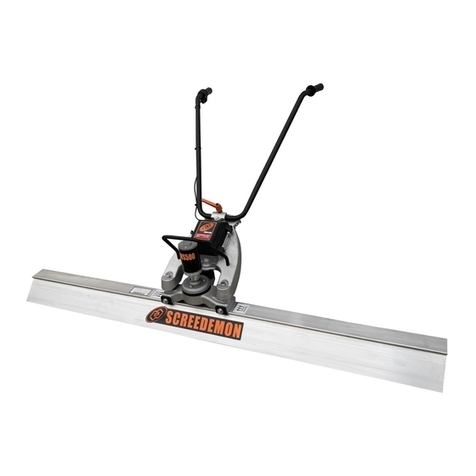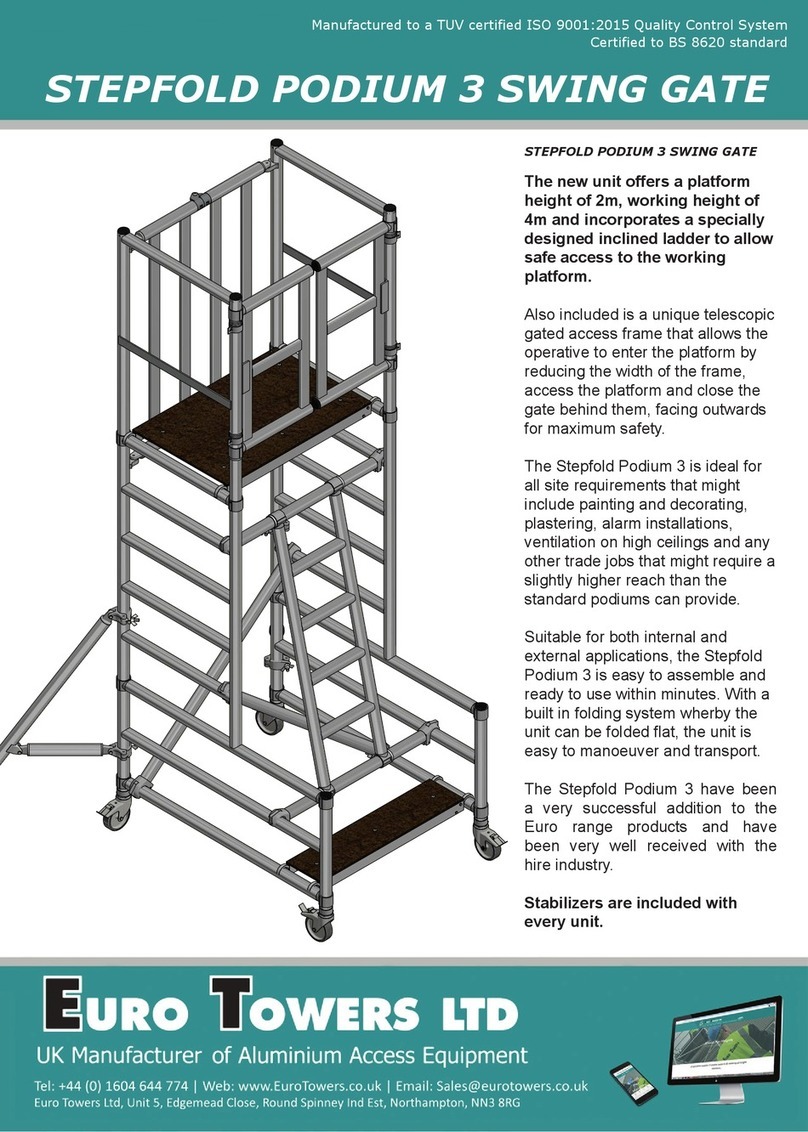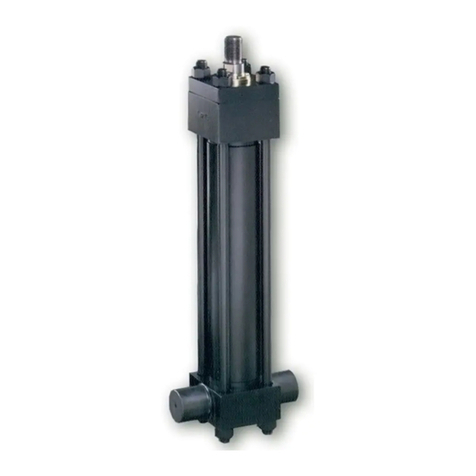Barreto 20RTK User manual

20RTK –23RTK OWNER’S MANUAL 12/8/21 Page 1 of 18
THE
MODEL 20RTK –23RTK
STAND ON HYDRAULIC TRACK TRENCHER
OWNER’S MANUAL
CONGRATULATIONS!
You are now the proud owner of the BARRETO trencher. The OPERATOR’S MANUAL is attached to
the machine. Please study it and this manual to become familiar with the trencher, its characteristics, and
method of operation. Pay particular attention to the safety and operating instructions to prevent personal
injury or equipment damage.
If you have any questions or need any replacement parts in the future, please contact us at your
convenience. Our toll-free phone number, fax and email are listed below.
THANK YOU for your patronage and confidence in BARRETO equipment.
Barreto Manufacturing, Inc.
Innovative Equipment Engineered to Last
66498 Hwy 203, La Grande, OR 97850
(800) 525-7348 (541) 963-7348
FAX (541) 963-6755
E-Mail: [email protected]
Web Site: http://www.barretomfg.com
US Patent# 9,988,084
Machine Identification Record
Machine model number ________________________
Machine serial number ________________________
Engine manufacturer ________________________
Engine model number ________________________
Engine serial number ________________________

20RTK –23RTK OWNER’S MANUAL 12/8/21 Page 2 of 18
TABLE OF CONTENTS
TRENCHER ASSEMBLY INSTRUCTIONS ...................................................................................3
SERVICE INFORMATION..............................................................................................................3
HOUR METER................................................................................................................................. 4
TRENCHER INTENDED USE.........................................................................................................5
LUBRICATION REQUIREMENTS.................................................................................................5
CHAIN INSTALLATION.................................................................................................................6
OPERATOR TRAINING..................................................................................................................6
WARRANTY OF BARRETO MANUFACTURING EQUIPMENT.................................................7
MAINTENANCE PREPARATION..................................................................................................7
ROUTINE MAINTENANCE............................................................................................................8
TRACK TENSION ADJUSTMENT.................................................................................................9
BATTERY MAINTENANCE.........................................................................................................10
ELECTRICAL SCHEMATIC - HONDA GX630 & GX690 ........................................................... 12
ELECTRICAL SCHEMATIC - BRIGGS/VANGUARD 23 HP…………………………………….13
HYDRAULIC SCHEMATIC.......................................................................................................... 14
TRACK TRENCHER TROUBLESHOOTING GUIDE.................................................................. 15
SPECIFICATIONS......................................................................................................................... 17
INDEX............................................................................................................................................ 18

20RTK –23RTK OWNER’S MANUAL 12/8/21 Page 3 of 18
TRENCHER ASSEMBLY INSTRUCTIONS
Upon delivery, check for freight damage and any missing items. If there is damage, notify the carrier and
Barreto Manufacturing immediately. Remove trencher from shipping crate.
When documentation refers to “right side” or “left side”, it is relative to the operator’s position while
standing on the operator’s stand.
Install cushion pad, boom cushion, and boom. CAUTION!! The boom is heavy. Two people should be
used to lift it into place. See the exploded view drawing 00368 R1. Push boom on as far as it will go onto
the boom mount (part of the chain motor housing weldment). Be sure adjuster screw is backed out.
SERVICE INFORMATION
HYDRAULIC SYSTEM:
•Your trencher should arrive with approximately 14 U.S. gallons (53 liters) of tractor transmission /
hydraulic fluid in the tank. Shipping regulations may prohibit shipping with the hydraulic fluid.
Check the reservoir level using the sight gauge on the side of the tank. If required, add tractor
transmission / hydraulic fluid to the reservoir. For machine use in ambient temperatures between
+32°F (0°C) and +90°F (32°C) hydraulic fluid ISO 68 is recommended. If the machine is operated at
temperatures below +32°F (0°C) then hydraulic fluid ISO 46 is recommended.
•Recheck oil level after trencher has been run and oil has circulated through the components.
Routinely check level thereafter.
•Change hydraulic fluid filter after the first 50 hours of use. Change it every 200 hours thereafter.
•Add approximately one quart (1 liter) of hydraulic fluid to reservoir with each filter change.
•Discard the old filter according to environmental standards in your geographic area.
•Check all hydraulic fittings for leaks and tighten if necessary.
WARNING - Running the trencher without hydraulic fluid will cause serious damage to the hydraulic
pump. INSURE THAT THE RESERVOIR FLUID LEVEL IS TO THE SIGHT GAUGE BEFORE
STARTING THE MACHINE.
IMPORTANT: If the couplers between the engine and the pump are
moved or removed for any reason, it is CRITICAL that they have a 1/16”
gap between them when reinstalled. Failure to have this gap will result in
rapid wear and failure of your pump!
NOTE: It is very important to move the fuel shutoff lever to the closed position after stopping the
engine. Failure to do so could cause fuel to leak down into the cylinder and crankcase. Damage
resulting from this will void your engine warranty and not be covered.
IMPORTANT - The engine on the Barreto trencher may or may not have been serviced prior to shipping.
Shipping regulations may prohibit shipping with fuel or oil in the engine. Check levels and add oil and
fuel as required before starting engine. Service the engine according to the engine owner’s manual before
starting.

20RTK –23RTK OWNER’S MANUAL 12/8/21 Page 4 of 18
HOUR METER
The DGI®TACH/HOUR hour meter tracks the hours of machine operation in order for routine
maintenance to be performed on a timely basis. It can also show your engine RPM’s by using the
wand magnet to toggle the display. If the wand gets lost, a small mechanic’s pick-up magnet will
work.
Refer to this manual for equipment service requirements and to the Engine Manual for other engine
service requirements.
RESET TOOL

20RTK –23RTK OWNER’S MANUAL 12/8/21 Page 5 of 18
TRENCHER INTENDED USE
This machine is designed for digging trenches in “normal” ground of reasonably soft dirt and stones up to
6” (15cm) in diameter. Ground with larger stones, high clay content, very hard packed, very dry, or in a
frozen condition may be unsuitable for normal trenching. Consider using a backhoe or other heavier
equipment for such conditions.
LUBRICATION REQUIREMENTS
Grease at the intervals indicated per the illustration of grease lubrication points. There is also a grease
diagram decal on the machine.

20RTK –23RTK OWNER’S MANUAL 12/8/21 Page 6 of 18
CHAIN INSTALLATION
CAUTION!! The chain is quite heavy. You may want help to lift it.
1. Slide chain under sprocket, with teeth in the correct cutting direction. Properly installed, the
cutting edges of the chain will face forward on the top of the boom and rearward on the bottom of
the boom (see diagram below).
2. Start engine and push digging boom control lever forward to lower boom onto the chain. Stop
engine.
3. Wrap chain around boom and sprocket. Install chain master link or link pin and cotter.
4. Use boom adjuster screw to tighten chain. Chain should have enough slack to allow approximately
2" (5cm) of space between middle of boom and chain when boom and chain are straight out in a
horizontal position. Tighten adjuster screw locknut.
Forward Cutting edge
Cutting edge Rearward
OPERATOR TRAINING
Rental companies should demonstrate all of the machine operations to each rental customer including:
•Starting up the engine.
•Loading the trencher onto the trailer and securing it for road transport.
•Unloading the trencher from the trailer.
•Trenching procedure - Operation of the trencher.

20RTK –23RTK OWNER’S MANUAL 12/8/21 Page 7 of 18
WARRANTY OF BARRETO MANUFACTURING EQUIPMENT
Barreto Manufacturing, Inc. warrants all BARRETOequipment to be free of defects in material and
workmanship for a period of one (1) year. All BARRETO fuel components, fuel tank, cap, lines &
fittings are warranted for two (2) years. Warranty period begins on date of delivery to the original user.
This warranty is in lieu of all other warranties, whether written or implied, and is limited to:
1. Replacement of parts returned to the dealer and/or factory and determined defective upon
inspection. (Replacement for parts to dealers shall be at dealer cost plus shipping charges.)
2. Time for pick-up and/or delivery, transportation of service calls by dealers is excluded.
Manufacturer reserves the right to determine reasonable time required for repair.
Warranty does not apply to damage caused by abuse or neglect. Time and materials required for
normal maintenance and service are also excluded from warranty coverage.
Engines, engine attached fuel tanks, engine accessories, batteries and tires are warranted by the
original manufacturer and are not covered by the Barreto Equipment Warranty.
Wear parts such as dig chains, dig teeth, sprockets, chain rollers, bearings, bushings etc. are
excluded unless it can be determined that a defect has contributed to premature wear.
MAINTENANCE PREPARATION
Only trained & qualified personnel should perform maintenance or repairs of the trencher. Before
performing any service, maintenance, adjustments, repairs, or off-season long-term storage, follow the
SHUT DOWN PROCEDURE in the OPERATOR’S MANUAL.
Do not touch the engine, muffler, or any of the hydraulic components until cool.
WARNING: Muffler and engine get hot enough to cause serious burns.
For the safety of yourself and others, allow enough time for the engine,
muffler, and the hydraulic fluid to cool completely before performing any
cleaning or maintenance.
Avoid contact with hydraulic fluid.
WARNING: When machine is operating, hydraulic fluid is under extreme pressure and can get
under skin and burn or poison.
Read the BATTERY & ELECTRIC STARTER SAFETY INSTRUCTIONS. Disconnect the battery,
removing the negative terminal first by loosening the wing nut where the cable end is secured to a post on
the trencher frame. When ready to reattach the cables, reconnect the positive terminal first.
If you need to lower the dig chain boom without power, do the following:
1. Position a pan under the trencher to catch hydraulic fluid.
2. Support the boom front end with a hoist or forklift.
WARNING: The boom with dig chain is heavy. Manpower alone is not recommended, but if
necessary, use a team of two strong workers to support the boom, and a third worker to loosen the
hose.
3. Loosen the hose at the rod end (front) port of the boom cylinder and lower the boom.
4. If it still will not lower, then loosen the hose at the back end port of the boom cylinder.

20RTK –23RTK OWNER’S MANUAL 12/8/21 Page 8 of 18
ROUTINE MAINTENANCE
Routinely check the condition, clean, tighten, repair, or replace as necessary the following:
•Dig chain boom guard
•Muffler guard
•Hydraulic hoses and fittings
•Fuel lines
•Fasteners
•Safety decals
Clean safety decals often using soap and water. Do not use abrasive cleaners or solvents such as
mineral spirits that may damage the decals. Replace any damaged (unreadable) or missing decals. If
you replace a machine part that has one or more decals affixed to it, replace the decals also.
Replacement parts and decals can be purchased from Barreto Manufacturing, Inc. When attaching
decals, the temperature of the mounting surface must be at least 40°F (5°C) and must be clean and
dry.
Service the engine according to the engine owner’s manual. Follow the directions for all aspects of
service including air filter change, oil level checking, filling, draining, disposal of engine oil, disposal
of petrol/gasoline, and off-season long-term storage.
Off-season long-term storage of the trencher can be at any ambient temperature.

20RTK –23RTK OWNER’S MANUAL 12/8/21 Page 9 of 18
TRACK TENSION ADJUSTMENT
Track must be tensioned enough to prevent de-tracking. Too much tension will cause increased wear on
roller, sprockets and drive motor bearings. There are two methods of measuring correct tension: Measure
the compression of the springs, or measure track sag.
To measure spring compression:
Loosen tension adjuster nut and lock nut completely. Measure free length of springs. Then tighten
adjuster nut to compress tension spring pair to a length of 5/8” (16mm) less than free length. Tighten lock
nut.
To measure track sag:
Lift the machine and raise the track off the ground. Measure the distance between either one of the central
rollers and track metal core bars and adjust track tension to get 1/2” (13mm) track sag.
To remove/replace track:
1. Completely loosen tensioner nuts.
2. Retract idler completely.
3. Remove track from idler first, sprocket second, and front roller last.
4. Reverse procedure to replace track.
Adjust track tension per instructions and illustration.

20RTK –23RTK OWNER’S MANUAL 12/8/21 Page 10 of 18
BATTERY MAINTENANCE
Follow the SHUT DOWN PROCEDURE in the OPERATOR’S MANUAL before doing any
battery maintenance. For your safety always abide by the following:
Shield entire face, especially your eyes, and wear rubber gloves to avoid acid burns whenever doing
anything with the battery. Battery caps must be tightly in place if the battery has removable caps.
WARNING: The battery contains sulfuric acid that can cause blindness and severe burns. Avoid
contact with eyes, skin, and clothing. If acid contacts eyes, call 911 immediately and flush eyes
with water for 15 minutes or until emergency medical help arrives. If acid contacts skin, flush area
with plenty of water. If acid is ingested, drink large quantities of water or milk then follow with
milk of magnesia, beaten egg, or vegetable oil, and get medical attention immediately.
Avoid contact with battery components. Wear rubber gloves and wash hands after handling any
battery components.
WARNING: Battery posts, terminals, and related accessories contain lead and lead compounds,
chemicals known to cause cancer and reproductive harm. Acid can cause blindness and severe
burns if leaked from the battery.
Do not charge or jump-start the battery near flames or sparks, or while smoking.
WARNING: Battery fumes are flammable and explosive. Avoid explosion hazard that could blind
and burn. Tools and jumper cable clamps can make sparks, so use them with care. Shield eyes
and face, and wear rubber gloves.
ELECTROLYTE LEVEL: Check the battery electrolyte level every 25 hours of machine use and
if necessary add distilled water following this procedure:
1. Disconnect the battery cables, removing the negative cable first.
2. Remove the battery from the trencher.
3. Clean the battery exterior with paper towels.
4. If the battery posts and cable terminals are corroded, clean them with a wire brush cleaner
tool. A solution of four parts water and one part baking soda is helpful.
5. Apply a light coating of grease to the battery terminals to help prevent corrosion.
6. Remove the battery caps.
7. Slowly pour distilled water into each battery cell until the electrolyte level is up to the full line
indicated for each cell on the battery. Do not overfill. Overflow of electrolyte, which contains
sulfuric acid, can cause severe corrosion to the trencher.
8. Reinstall the battery caps tightly in place.
9. Reinstall the battery securely into the trencher.
10. Reconnect the cables. Attach the positive cable first, then the negative one.

20RTK –23RTK OWNER’S MANUAL 12/8/21 Page 11 of 18
BATTERY MAINTENANCE (continued)
BATTERY VOLTAGE LEVEL: Check the voltage level using an appropriate meter. Always keep the
battery fully charged and clean to help prolong battery life expectancy, especially when the temperature is
below 32°F (0°C). For off-season long-term storage, we recommend removing the battery from the
trencher and storing where the ambient temperature remains above freezing.
TO CHARGE THE BATTERY follow this procedure:
1. Disconnect the battery cables, removing the negative cable first.
2. Remove the battery from the trencher.
3. Clean the battery exterior with paper towels.
4. If the battery posts and cable terminals are corroded, clean them with a wire brush cleaner tool. A
solution of four parts water and one part baking soda is helpful.
5. Apply a light coating of grease to the battery terminals to prevent corrosion.
6. Check the battery electrolyte level (see procedure above).
7. Insure that the battery caps tightly in place.
Do not charge the battery near flames or sparks, or while smoking.
WARNING: Battery fumes are flammable and explosive. Avoid explosion hazard that could blind
and burn. Tools and jumper cable clamps can make sparks, so use them with care. Shield eyes and
face, and wear rubber gloves.
8. Connect a 12-volt DC battery charger and charge at 3 to 4 amperes for 4 to 8 hours. Do not
overcharge.
9. When the battery is fully charged, turn off and unplug the charger from the electrical outlet, then
disconnect the charger leads from the battery posts.
10. Reinstall the battery securely into the trencher.
11. Reconnect the cables. Attach the positive cable first, then the negative one.

20RTK –23RTK OWNER’S MANUAL 12/8/21 Page 12 of 18
ELECTRICAL SCHEMATIC - HONDA GX630/GX690

20RTK –23RTK OWNER’S MANUAL 12/8/21 Page 13 of 18
ELECTRICAL SCHEMATIC –BRIGGS/VANGUARD 23 HP
1.0 Amp
100 Volt
Diode
1N4001
100 uf
50 Volt
Capacitor
Hour
Meter
Regulator
Flywheel/Stator
Assembly
Amp Meter
+-
Engine Ground/
Stop Terminal
+ -
12 V Battery
-
+-
Starter
Motor
000
493625
Key
Switch
Starter Solenoid
S
A
L
M
G
B
493625 Ignition Switch
Terminal "A" - Red Wire to Regulator
Terminal "B" - Orange Wire to Battery
Terminal "M" - Black Wire to Engine Ground
Terminal "S" - Yellow Wire to Starter Solenoid
Optional
Terminal "L" - White Wire to Fuel Solenoid or
Accesories
Terminal "G" - Brown Wire Ground on Remote
Installation
+ of Battery - Electric Clutch or Oil Pressure
Switch
S
A
L
M
G
B
Typical Regulated Wiring Diagram
Afterfire
Solenoid
Lights
-
+
-
+
electric
clutch
Key Position Circuit Made
Off G+M+A
Run B+L+A
Start B+L+S
Oil Pressure
Switch

20RTK –23RTK OWNER’S MANUAL 12/8/21 Page 14 of 18
HYDRAULIC SCHEMATIC

20RTK –23RTK OWNER’S MANUAL 12/8/21 Page 15 of 18
TRACK TRENCHER TROUBLESHOOTING GUIDE
CAUTION!! Always use extreme care when troubleshooting or making adjustments on trencher. Stay
clear of chain and auger when engine is running. Stop engine before disassembling any component.
A. Entire hydraulic system does not operate and the engine is not under load.
1. Low hydraulic fluid in tank.
2. Hydraulic pump-to-engine coupler has
slipped.
3. Main pump suction leaking air into pump
intake.
Add hydraulic fluid until it shows in sight
gauge.
Check for wear and replace both coupler
halves and rubber spider, as needed.
Check main suction hoses and fittings for
leaks and tighten fitting nuts.
B. Engine lugs down or dies and tracks and chain do not turn.
1. Rocks or other obstructions stopping chain.
2. Trenching depth or speed too great for soil
conditions.
3. Engine improperly tuned or maintained.
4. Low oil alert causes engine to shut down.
5. Engine losing power due to wear.
Reverse chain momentarily to free it from
obstruction. Raise boom and stop chain. See if
obstruction can be removed from trench.
Decrease ground speed or trenching depth.
See engine manual and correct as needed.
This may occur when trenching on hills.
Level trencher, check oil and allow oil alert to
reset.
See engine manual.
C. Chain fails to rotate, but track drive works.
1. Chain motor worn.
2. Chain Control Relief Valve
malfunctioning.
3. Chain drive pump worn.
Rebuild or replace motor. New motors are
available from Barreto Manufacturing.
Adjust Relief Valve to 3500 PSI or replace
relief spring if needed.
Replace pump.

20RTK –23RTK OWNER’S MANUAL 12/8/21 Page 16 of 18
TRACK TRENCHER TROUBLESHOOTING GUIDE (continued)
D. Tracks fail to turn, but chain rotates.
1. Sprocket key sheared.
2. Pump cable lever loose on shaft.
Replace key and other parts as needed.
Tighten setscrew on pump lever.
E. Hydraulic fluid leaks in hydraulic system.
1. Fittings are loose.
2. Worn or broken hoses.
3. Hydraulic fluid around chain motor or
shaft.
Tighten fittings on hoses and adapters.
Replace damaged hoses.
Inspect motor for leaking shaft seal. Rebuild or
replace motor. New motors are available from
Barreto Manufacturing.
F. Foaming hydraulic fluid coming from breather hose.
1. Improper fluid used.
2. Air leaking into fluid
Verify that hydraulic fluid used had
antifoaming additives. Tractor transmission /
hydraulic fluid ISO 68 is recommended for use
in temperatures above +32°F.
Inspect and tighten fittings and clamps on
pump intake hoses
G. Boom does not lift, or does not lower into ground.
1. Boom lift relief valve malfunctioning.
2. Boom cylinder piston seal damaged or rod
bent.
3. Boom pivot bushing seized.
Adjust relief to 1000 PSI. This may require a
replacement spring in valve.
Disassemble & replace parts as required.
Disassemble, inspect, clean & replace parts as
required.

20RTK –23RTK OWNER’S MANUAL 12/8/21 Page 17 of 18
SPECIFICATIONS
MODEL NUMBERS 20RTK 23RTK
DIMENSIONS
Weight 1690 lbs. (766.6 kg) 1690 lbs. (766.6 kg)
Height 56.2” (1.44 m) 56.2” (1.44 m)
Length 108” (2.775 m) 108” (2.77 mm)
Width 35.5” (901.7 mm) 35.5” (901.7 mm)
ENGINE
Engines Honda GX630 Briggs 23 hp V-Twin
Honda GX690
Fuel Gasoline Gasoline
Power: hp (kW) at 3600 RPM H-20.8 hp (15.52 kW) B-23 hp (17.2 kW)
H-22.1 hp (16.49 kW)
Fuel Capacity 3.2 U.S. gallons (12.1 liters) 3.2 U.S. gallons (12.1 liters)
Engine Oil Capacity 1.8 quarts (1.7 liters) B-1.4 quarts (1.3 liters)
H-1.8 quarts (1.7 liters)
Electric Start Standard Standard
Hour Meter Standard Standard
HYDRAULIC SYSTEM
Reservoir Capacity 14 U.S. gallons (53 liters) 14 U.S. gallons (53 liters)
Oil Cooler Standard Standard
TRACK SYSTEM
Track Width 7.1” (180 mm) 7.1” (180 mm)
Total Ground Contact 482.8” (.312 sq/m) 482.8” (.312 sq/m)
OPERATIONS
Ground Drive, Forward 210 feet per minute (64.8 m/m) 210 feet per minute (64.8 m/m)
Ground Drive, Reverse 90 feet per minute (27.4 m/m) 90 feet per minute (27.4 m/m)
BOOM / CHAIN OPTIONS
Depths 24, 30, 36, or 42” 24, 30, 36, 42, or 48”
(61, 76, 91, or 107cm) (61, 76, 91, 107, or 122cm)
Widths 4” (102mm) or 6” (152mm) 4” (102mm) or 6” (152mm)
Chain Types Cup, Double Cup, Skip Cup, Double Cup,
Welded Shark, Bolted Shark, Welded Shark, Bolted Shark,
Shark Combo Shark Combo
ACCESSORIES
A1570 - Lift eye: for hoisting the trencher
A1575 - Auxiliary Auger: extends removal of dirt to farther from the side of the trench
A1580 - Backfill blade: to fill in trenches
A1390 - Crumber: provides more effective removal of dirt from trench
Optional on 24, 30, or 36” Optional on 24, 30, or 36”
Standard on 42” Standard on 42” & 48”

20RTK –23RTK OWNER’S MANUAL 12/8/21 Page 18 of 18
INDEX
ASSEMBLY INSTRUCTIONS, 3
BATTERY MAINTENANCE, 10, 11
BOOM, 3, 6, 7, 15
CHAIN INSTALLATION, 6
DECALS, 8
ELECTRICAL SCHEMATIC –BRIGGS/VANGUARD, 13
ELECTRICAL SCHEMATIC - HONDA GX630/GX690, 12
GREASE, 5
HOUR METER, 4
HYDRAULIC FLUID, 3, 7, 15, 16
HYDRAULIC OIL FILTER, 3
HYDRAULIC SCHEMATIC, 14
LUBRICATION, 5
MAINTENANCE, 7, 8
OPERATOR TRAINING, 6
SERVICE, 3
SPECIFICATIONS, 17
TRACK TENSION ADJUSTMENT, 9
TRAILER, 6
TRANSPORT, 6
TRENCHER INTENDED USE, 5
TROUBLE SHOOTING, 15, 16
WARRANTY, 7
Other manuals for 20RTK
1
This manual suits for next models
1
Table of contents
Other Barreto Construction Equipment manuals
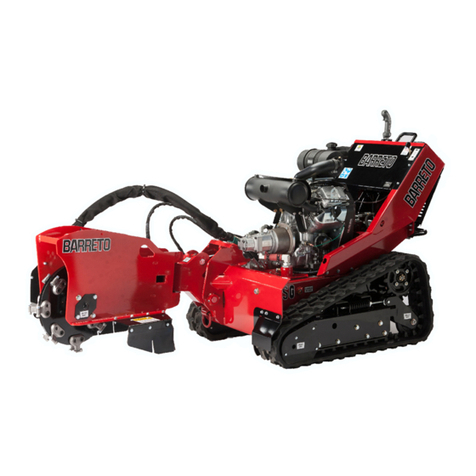
Barreto
Barreto E30SGB User manual
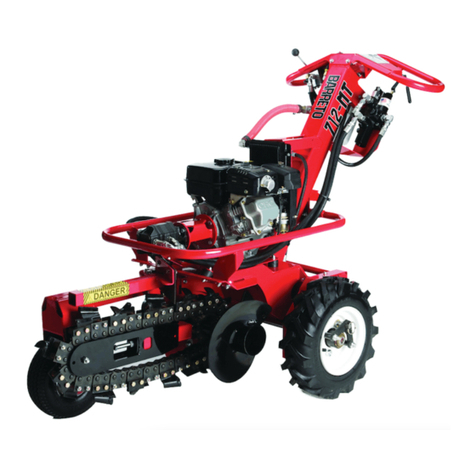
Barreto
Barreto 712MT User manual
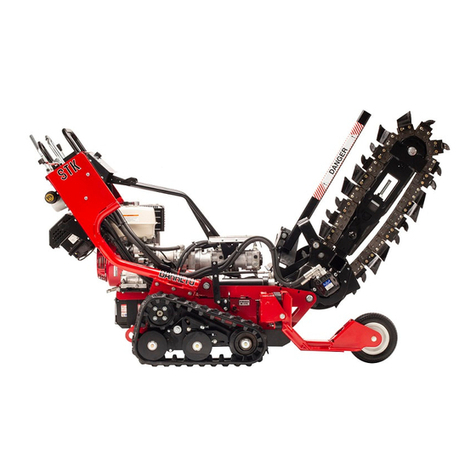
Barreto
Barreto 13STKH User manual
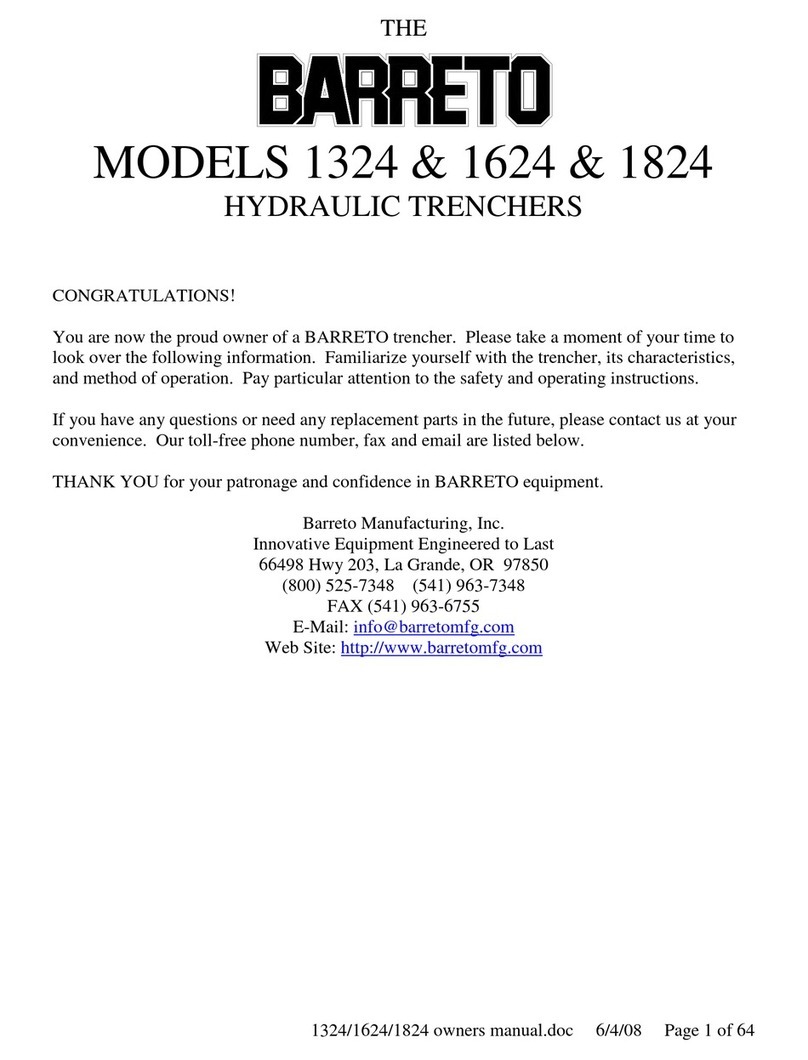
Barreto
Barreto 1324 User manual
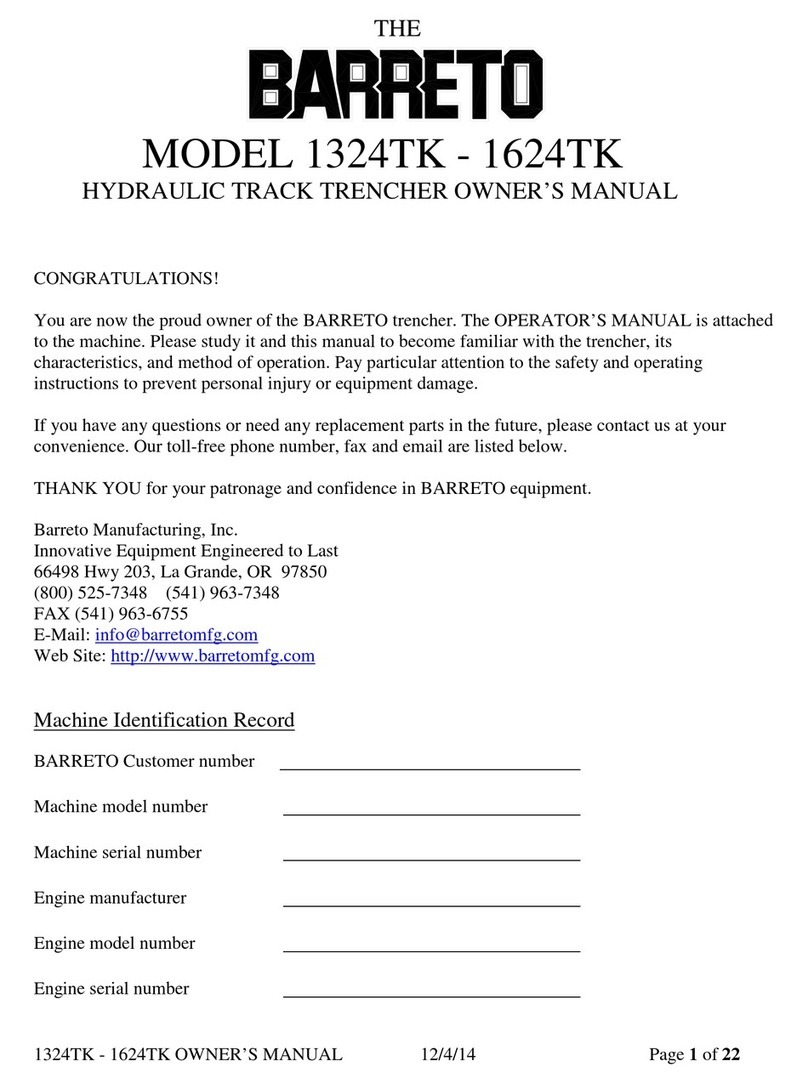
Barreto
Barreto 1324TK User manual

Barreto
Barreto 912HM User manual
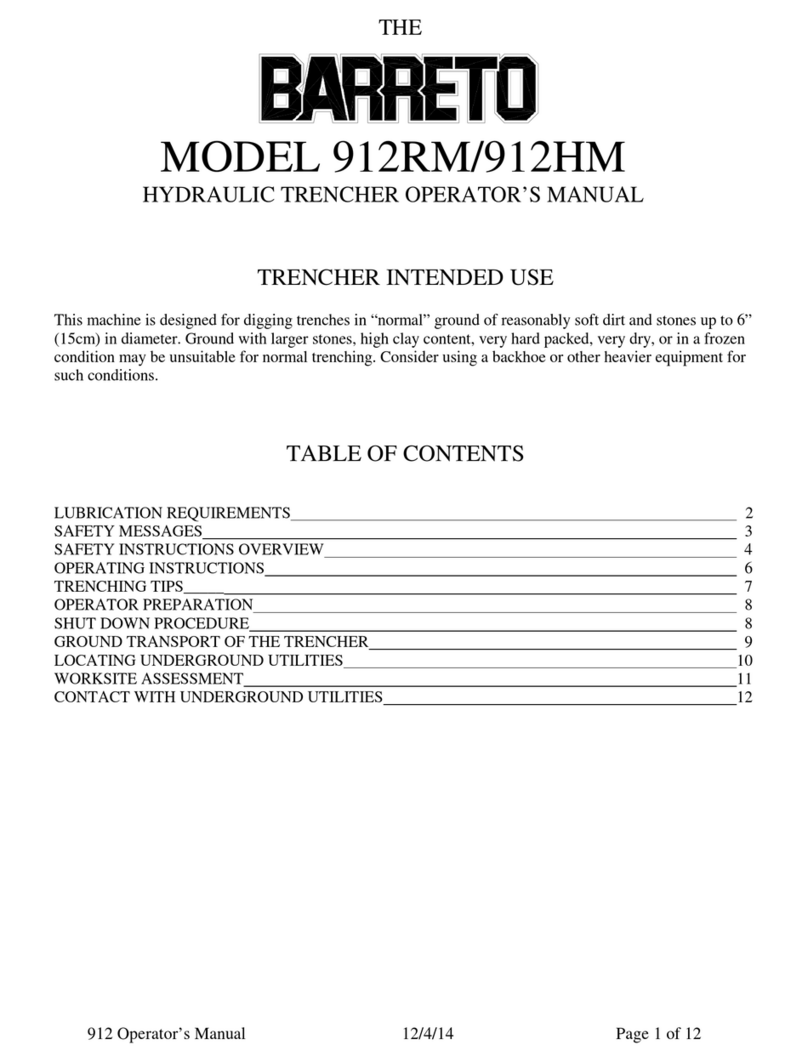
Barreto
Barreto 912RM User manual

Barreto
Barreto 1324D User manual
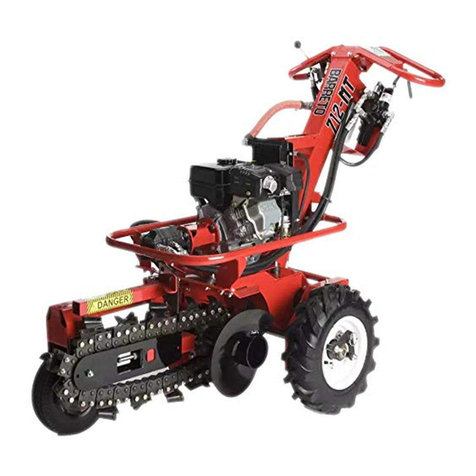
Barreto
Barreto 712MTH User manual

Barreto
Barreto HT712 User manual
Popular Construction Equipment manuals by other brands

Plymovent
Plymovent KUA-160/H Series Installation and user manual
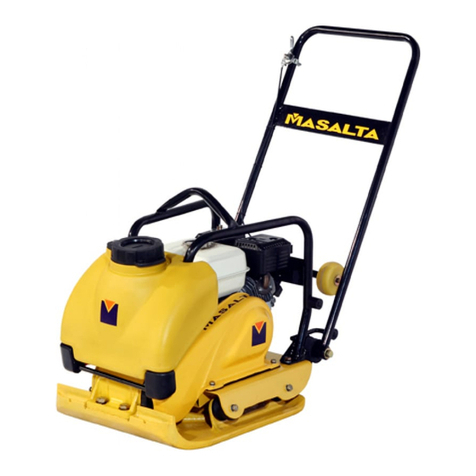
Masalta
Masalta MS60 owner's manual
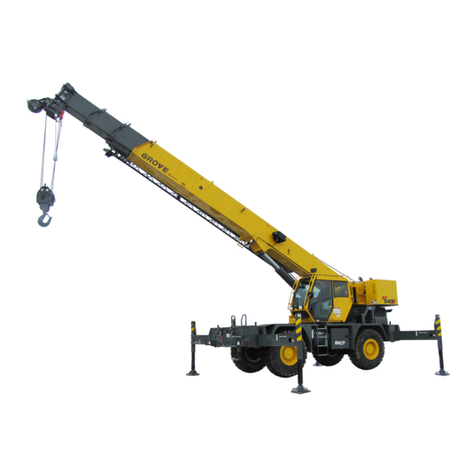
Manitowoc
Manitowoc Grove RT540E Service maintenance manual
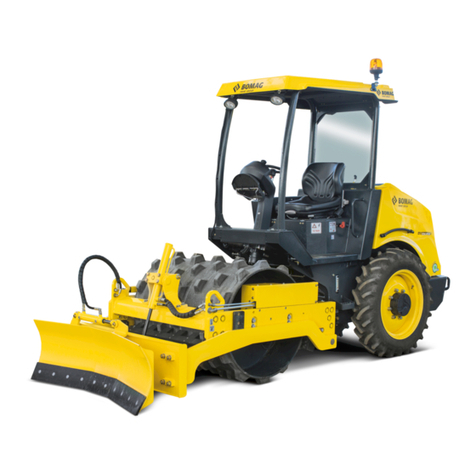
Fayat
Fayat BOMAG BW 124 PDH-5 Operating Instruction, Maintenance Instruction

Bomag
Bomag BW 900-2 operating instructions
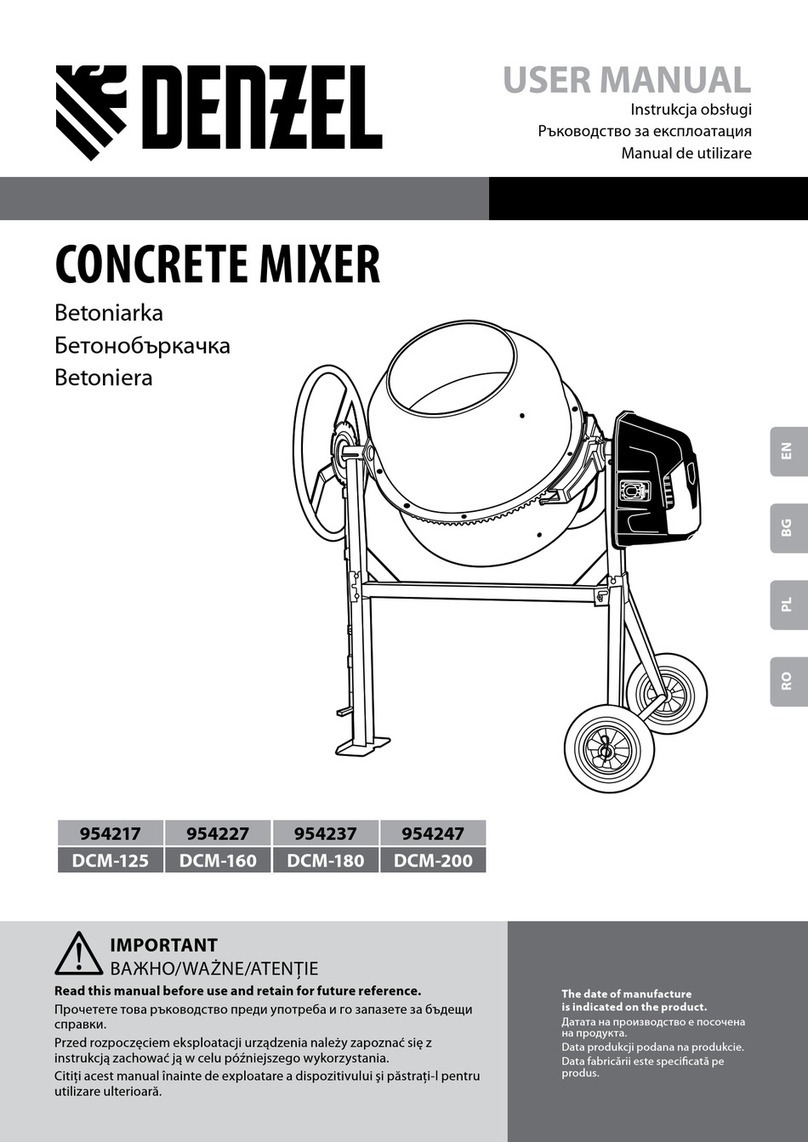
Denzel
Denzel DCM-125 user manual

